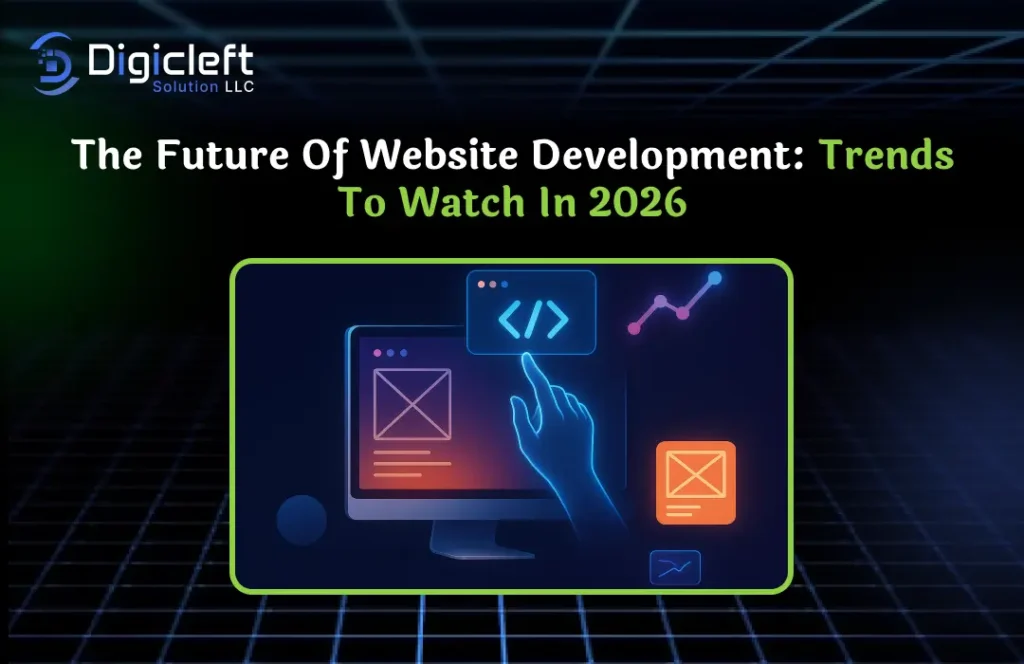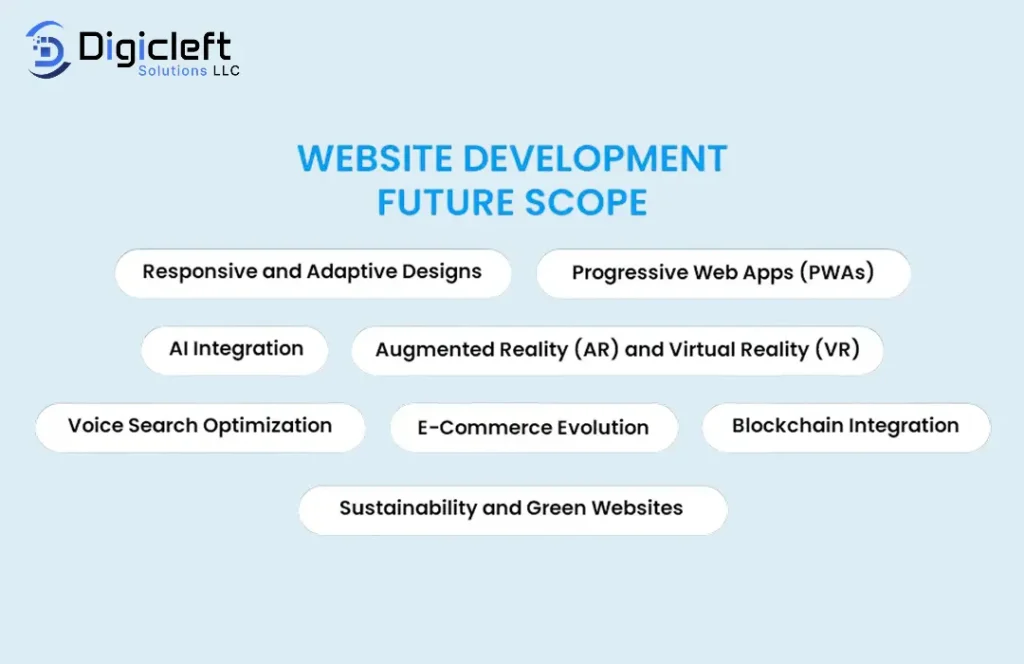
Let’s be real website development isn’t what it used to be. Gone are the days when a simple static website could impress visitors. By 2026, the digital landscape will be powered by AI, immersive design, and user-first experiences. Businesses, from startups to titans like Digicleft Result, must keep up with this evolution or risk fading into irrelevance. So, what does the future hold? Let’s dive into the upcoming trends that will shape the websites of tomorrow.
The Rise of AI-Powered Website
AI Website Builders
AI is no longer just a buzzword; it’s becoming the backbone of website development. By 2026, AI won’t just generate layouts; it will design smarter websites that adapt in real-time to user behavior.
Personalized User Experiences
Imagine a website that greets you by name, suggests products based on your mood, or adapts its design depending on whether you’re on mobile or desktop. AI makes that possible.
Impact on Developers and Businesses
Developers won’t lose their jobs; instead, they’ll work alongside AI, focusing more on strategy and creativity. Businesses like Digicleft Result will use AI-driven tools to serve clients faster and better.

Progressive Web Apps (PWAs) Going Mainstream
PWAs are no longer “the future” — they’re the present, and by 2026, they’ll dominate.
- Why PWAs Matter: They combine the best of websites and mobile apps.
- Offline Functionality: PWAs work without internet, making them ideal for unstable networks.
- Cost-Effectiveness: One PWA replaces separate iOS, Android, and web apps.
Voice-Enabled Websites
We’re talking to our devices more than ever, thanks to Alexa, Siri, and Google Assistant.
- Integration with Smart Devices: By 2026, websites will integrate with smart homes and IoT.
- Voice SEO: Optimizing for conversational queries will be non-negotiable.
- Accessibility: Voice navigation makes websites more inclusive.
Web3 and Decentralization
- Blockchain-Powered Websites: Expect decentralized hosting solutions.
- NFTs and Digital Ownership: Used for exclusive memberships, gated content, and ownership verification.
- Security: Blockchain ensures safer transactions and transparent data handling.
Hyper-Personalization of Websites
The one-size-fits-all website is dead.
- AI-driven content adapts to user preferences and browsing patterns.
- Analytics will predict user needs rather than just report data.
- Every visitor journey will feel unique.
No-Code and Low-Code Development
Not everyone is a coder and that’s okay.
- Empowers Non-Technical Users: Small business owners can build their own websites.
- Faster Prototyping: Test ideas in hours, not weeks.
- Where Professionals Still Matter: Complex projects will always need skilled developers.
Cybersecurity as a Priority
With growth comes new threats.
- Rising Attacks: Hackers will increasingly target even small businesses like Digicleft Result.
- AI-Driven Security: AI can detect unusual activity instantly and prevent breaches.
- For Small Businesses: Cybersecurity is survival, not optional.
The Role of 5G and Faster Internet
- Instant Speed: Websites will load instantly, even with heavy content.
- Streaming: High-quality video and interactive content will be the norm.
- Real-Time Data: Essential for e-commerce, gaming, and finance.

AR and VR in Website Design
- Immersive Shopping: Try-before-you-buy experiences.
- Virtual Tours: Real estate, travel, and education will benefit from VR.
- Interactive UX: Websites will feel more alive than static pages.
Green and Sustainable Website Development
- Eco-Friendly Hosting: Companies will shift to green hosting solutions.
- Carbon-Neutral Websites: Expect carbon footprint badges by 2026.
- Minimalist Design: Saves energy while improving UX.
Motion UI and Advanced Animations
- Micro-Interactions: Keep users engaged with subtle animations.
- Storytelling: Brands will use motion to create emotional connections.
- Balance: Too much animation can slow websites — balance is key.
The Future of SEO in 2026
- AI-Driven Algorithms: Search engines will rely heavily on AI.
- Voice-First SEO: Conversational queries will dominate.
- Video & Visual Search: Users will search with images and videos.
Human-Centered Web Design
- Accessibility: Designing for people with disabilities will be mandatory.
- Inclusive Design: Websites will adapt to different cultures and languages.
- Emotional Design: Focused on building real human connections.
Conclusion
By 2026, website development will be smarter, faster, and more human-centered than ever. From AI-driven personalization to blockchain-powered security, the digital future promises endless opportunities. Businesses like Digicleft Result that adapt early will thrive, while those resisting change may struggle. The future of website development isn’t just about technology it’s about creating meaningful digital experiences. Are you ready to embrace it?
FAQs
- What’s the biggest trend in website development in 2026? AI-driven personalization and immersive experiences like AR/VR will dominate.
- How will AI impact website developers? AI will handle repetitive tasks, freeing developers to focus on strategy, creativity, and innovation.
- Are PWAs better than native apps? For most businesses, yes. PWAs are cheaper, faster, and more accessible.
- Why is cybersecurity critical for website development in 2026? Because cyberattacks are rising, and even small businesses like Digicleft Result are targets.
- How can small businesses like Digicleft Result stay competitive? By adopting AI tools, building PWAs, investing in cybersecurity, and embracing sustainable and inclusive design.


